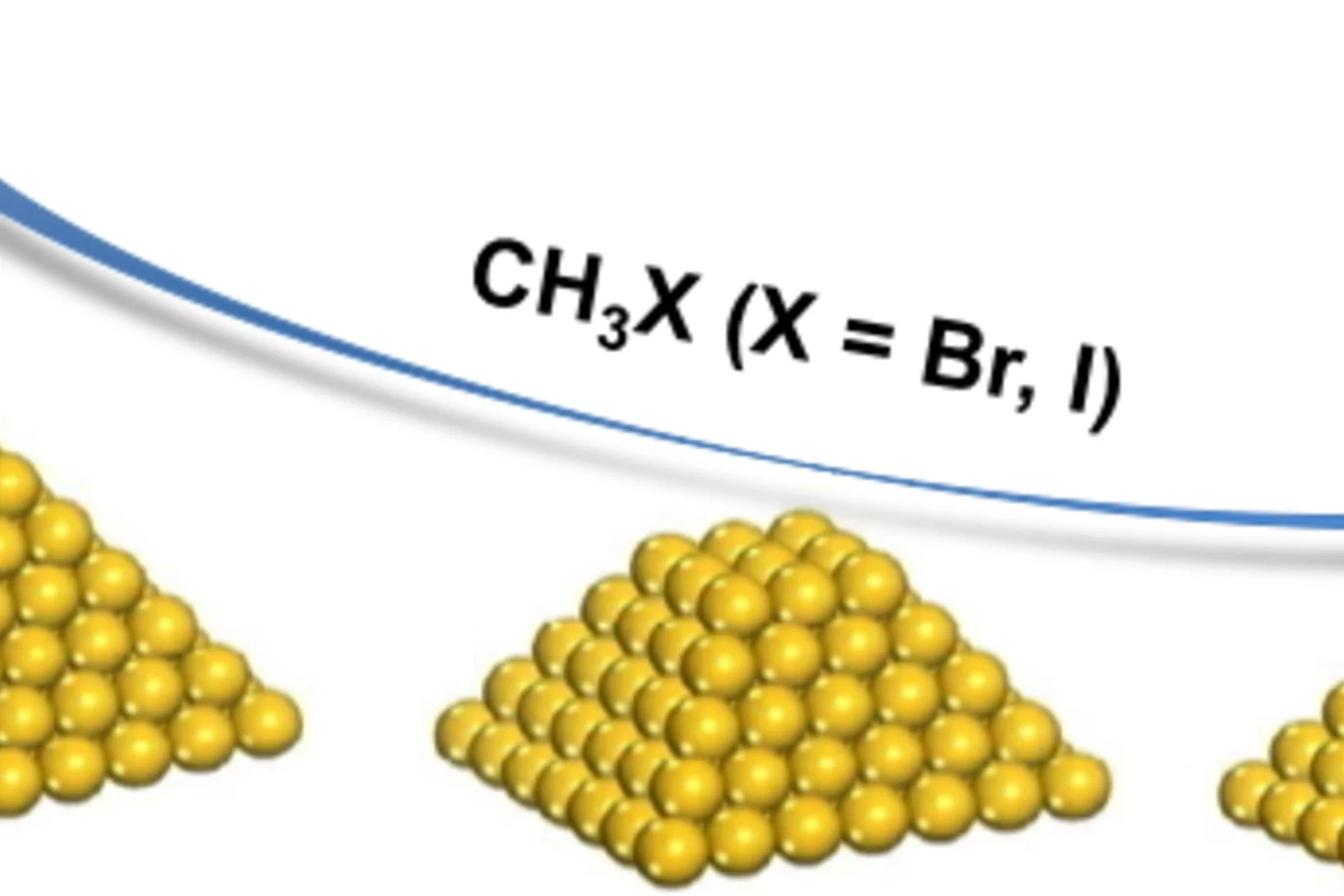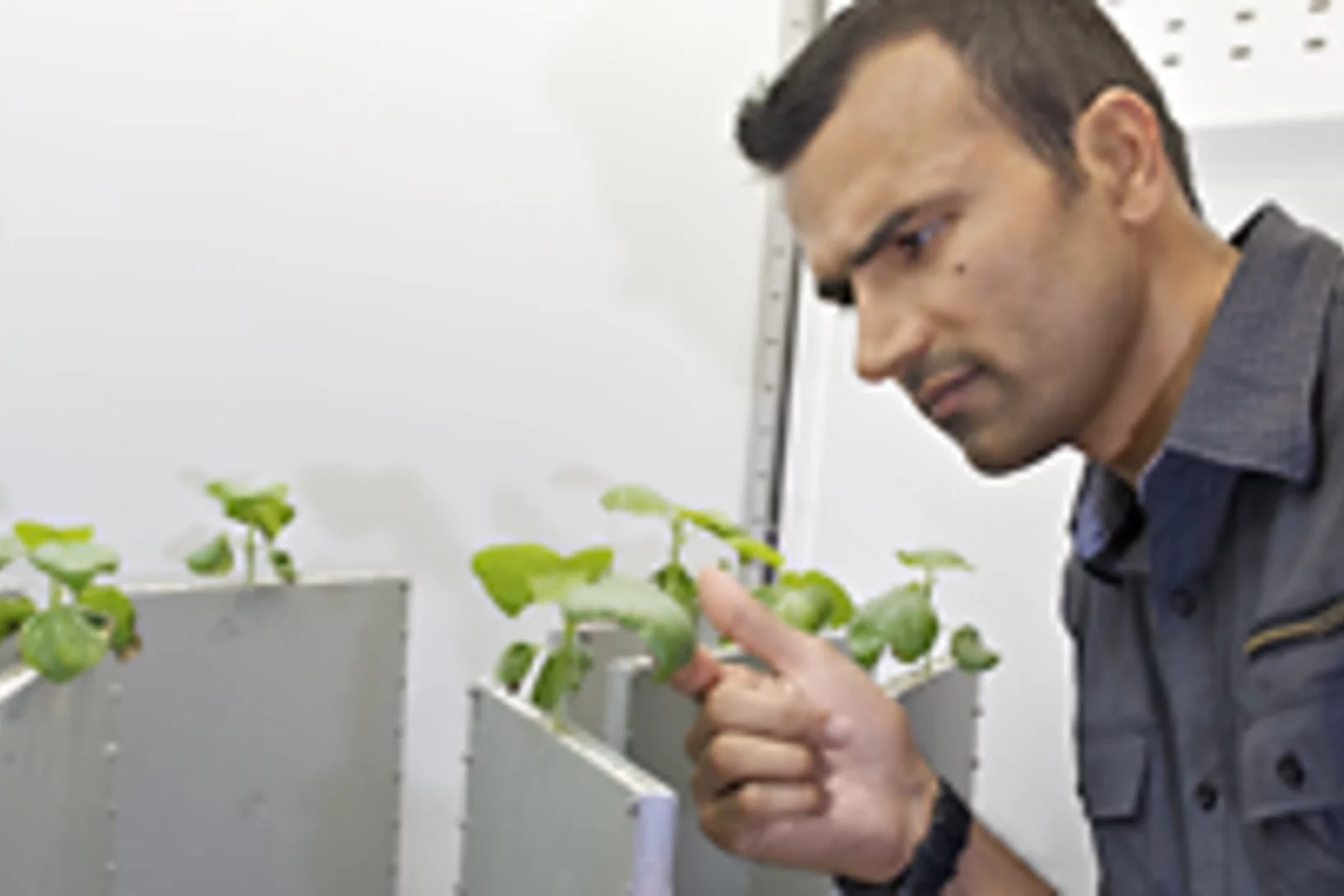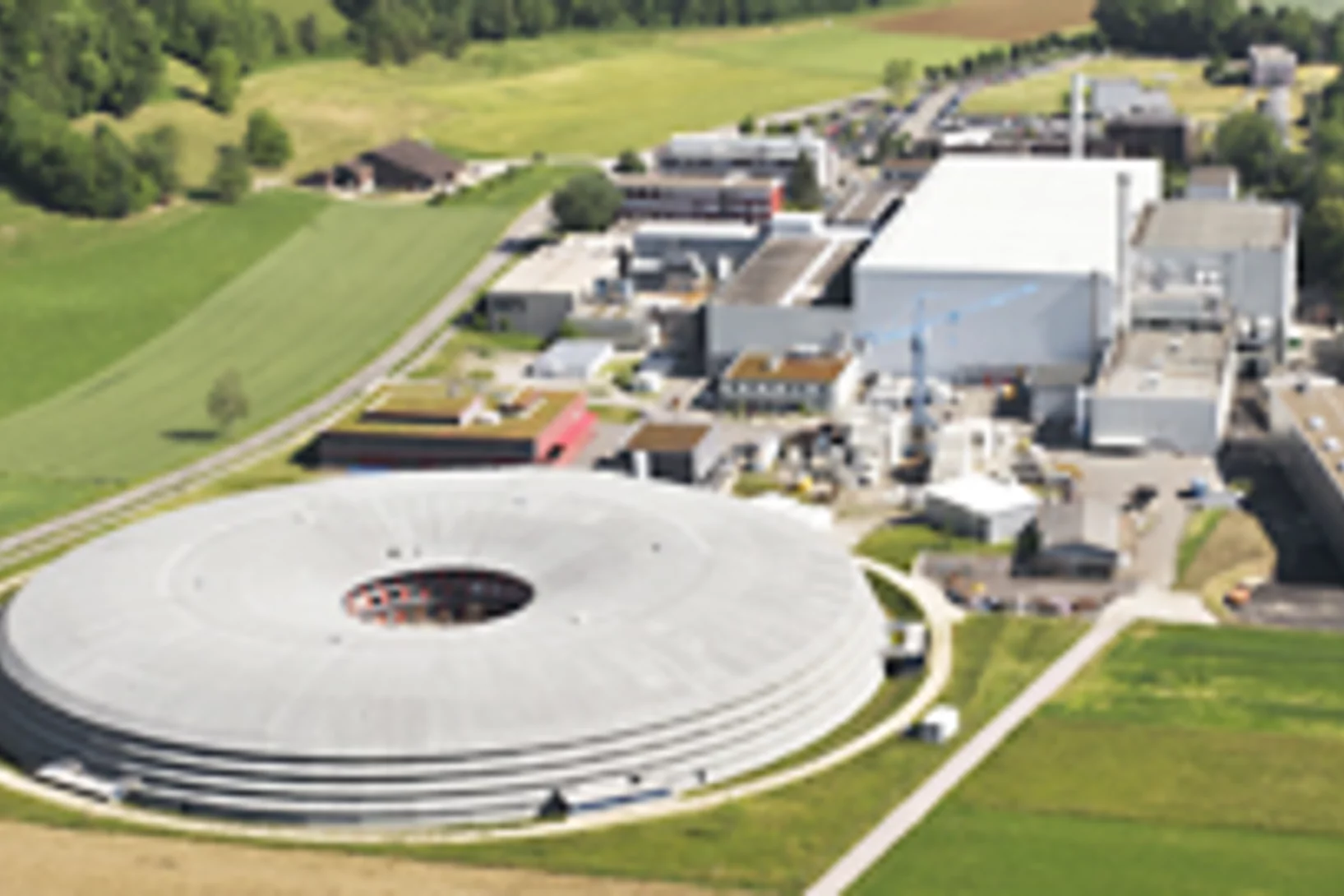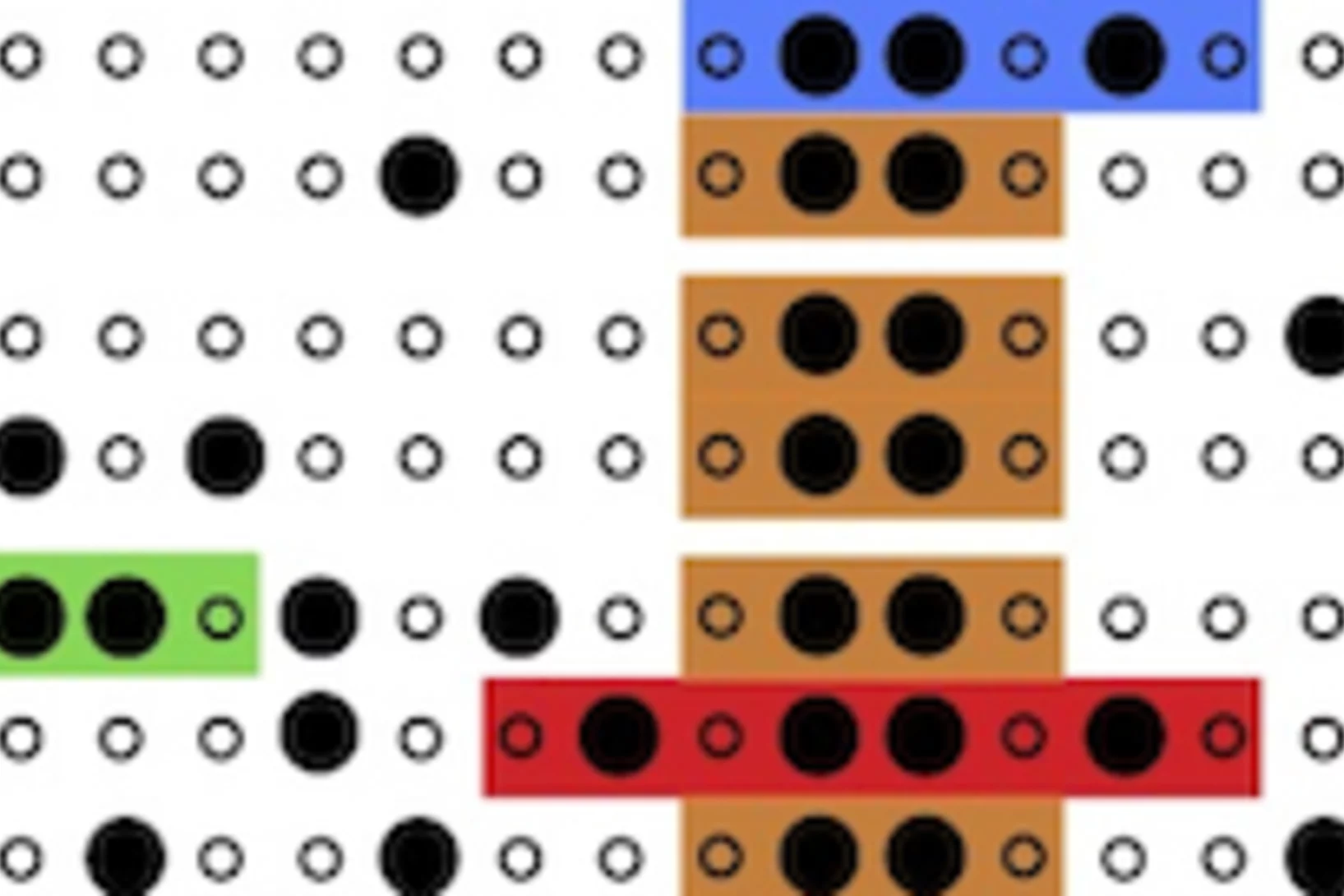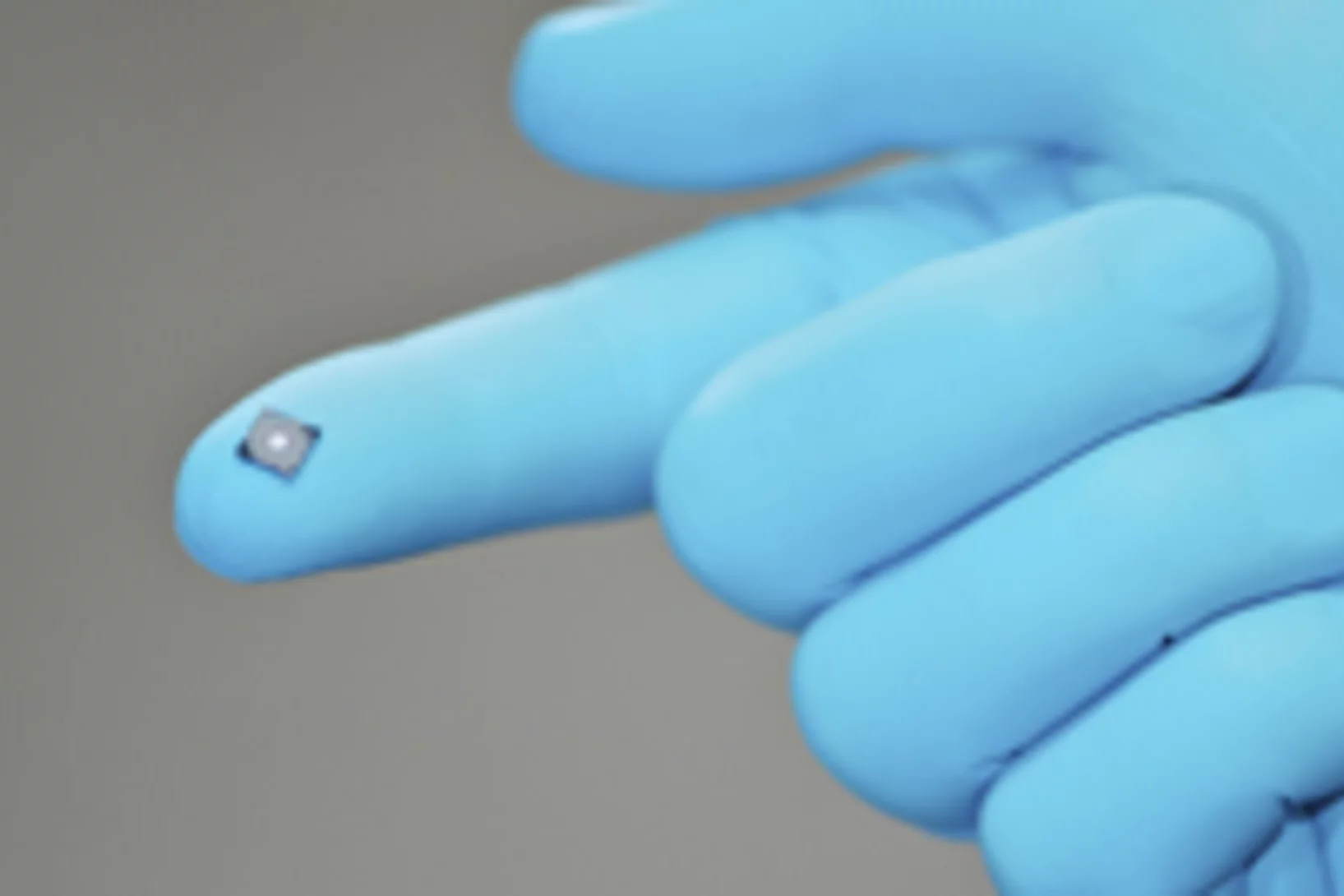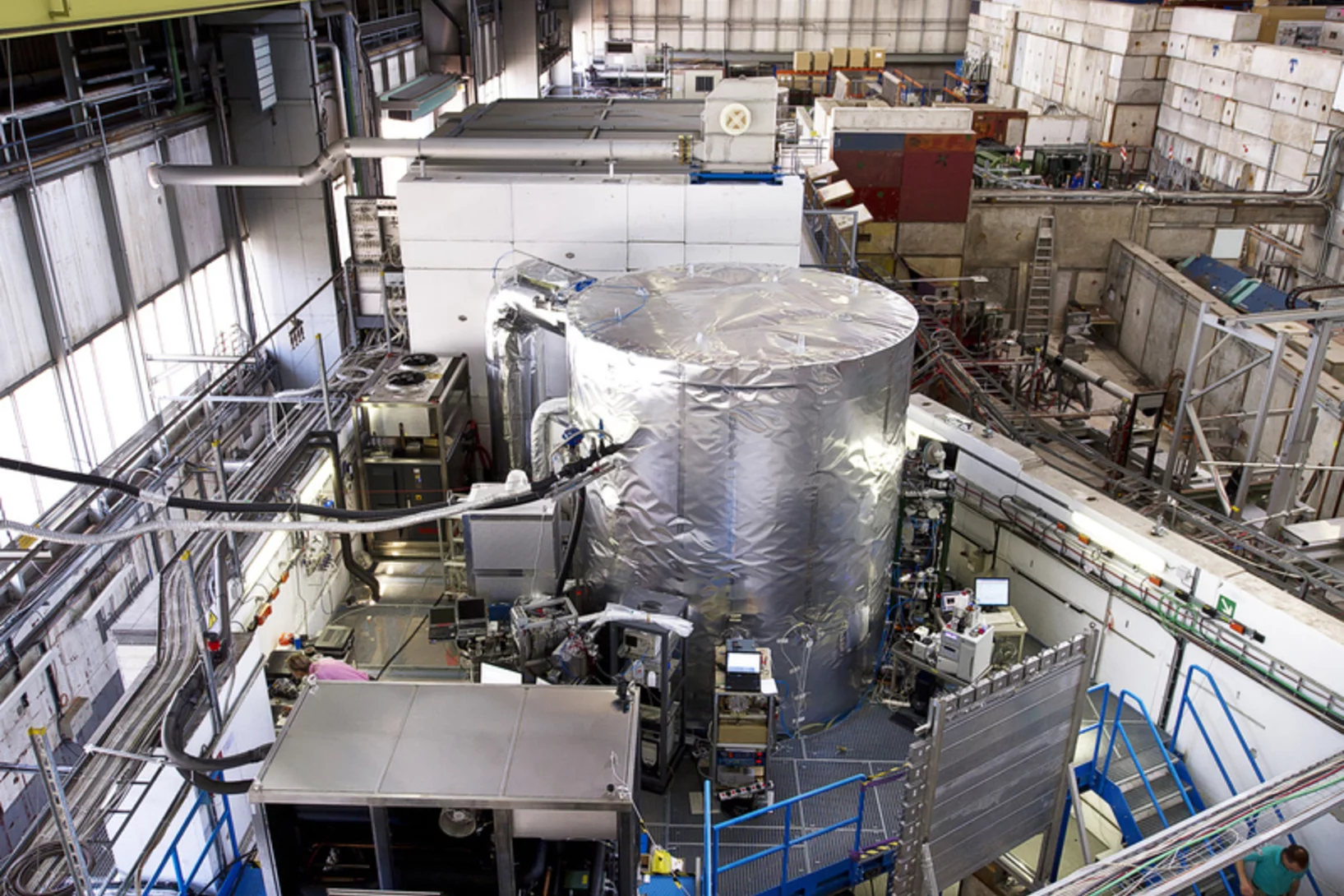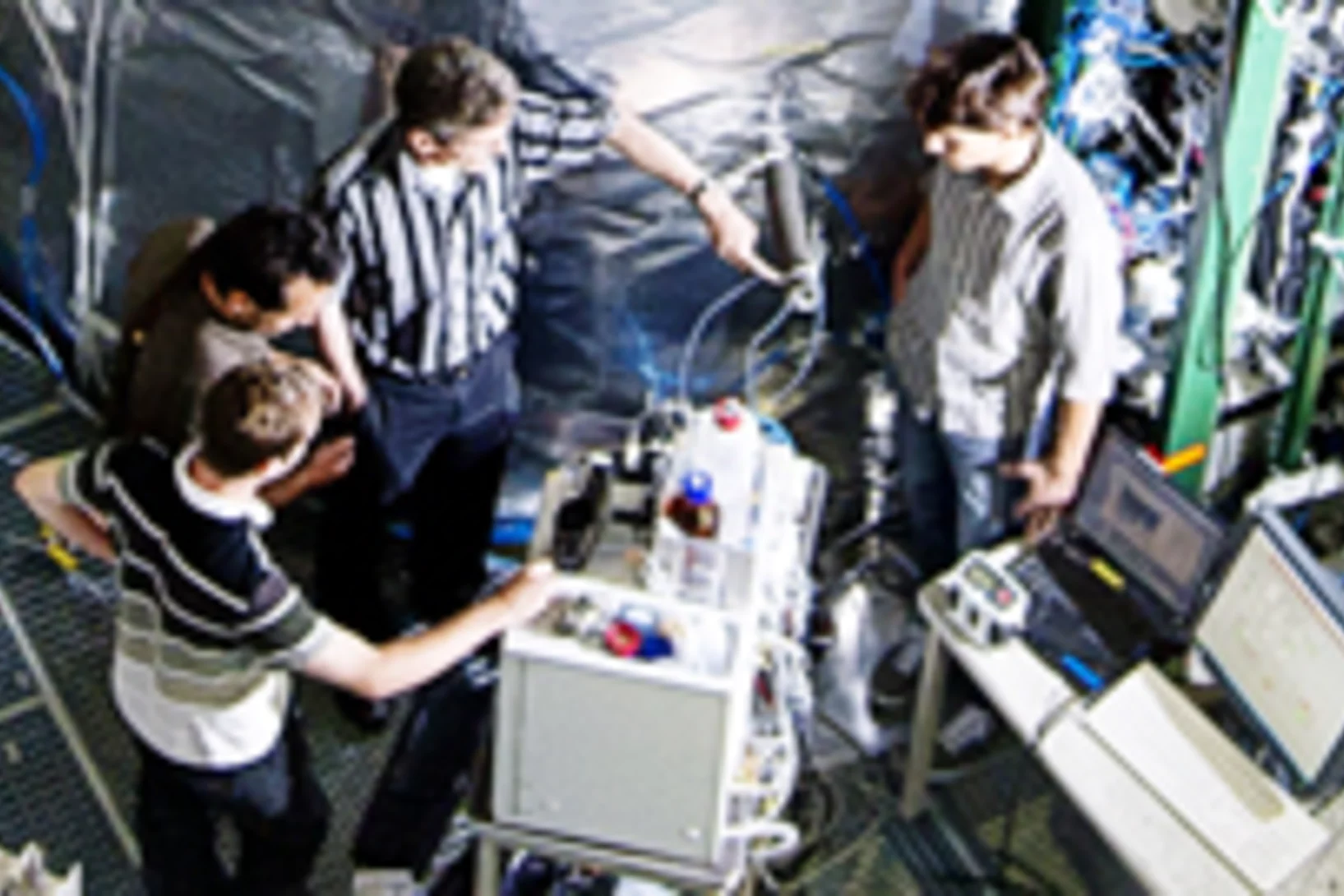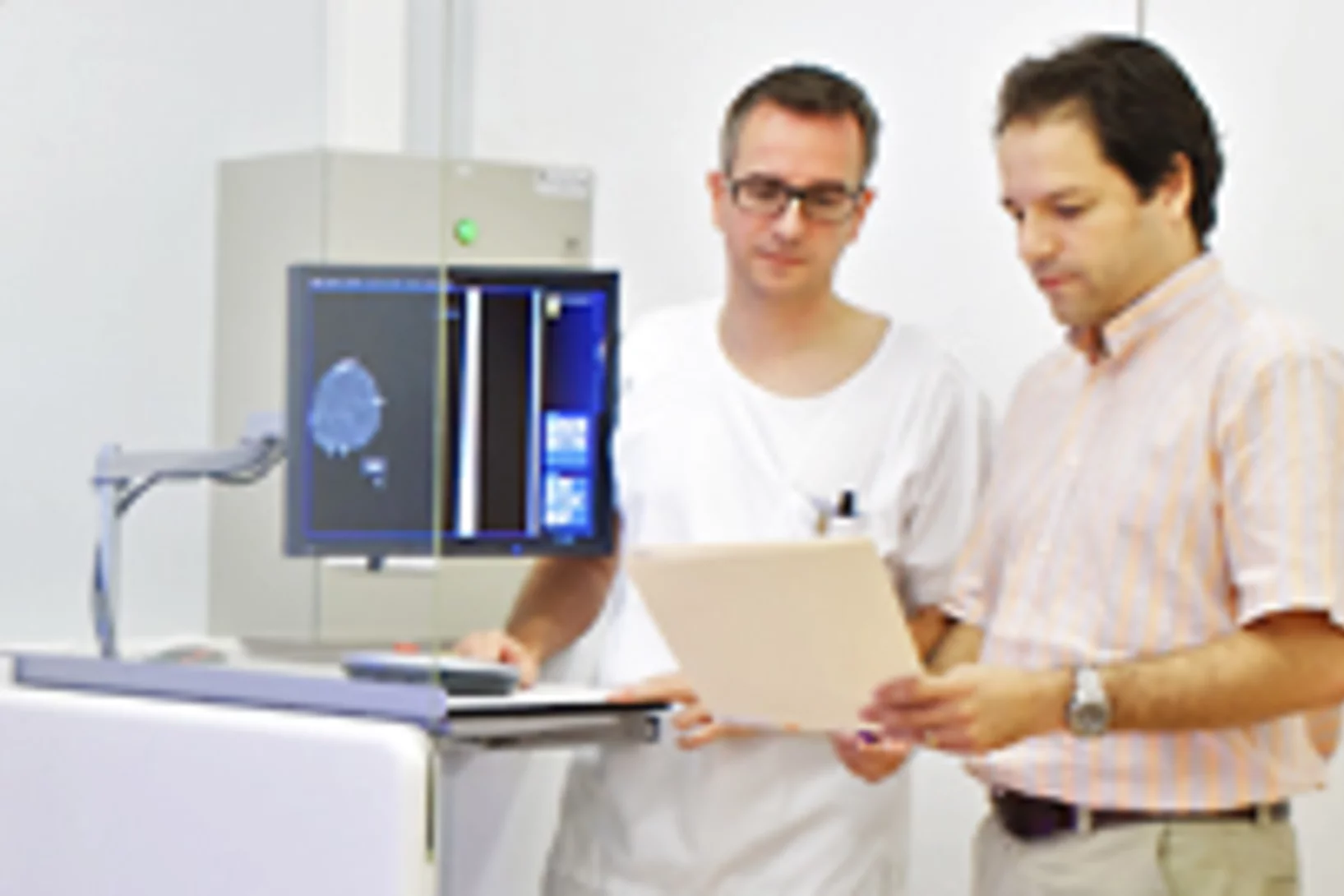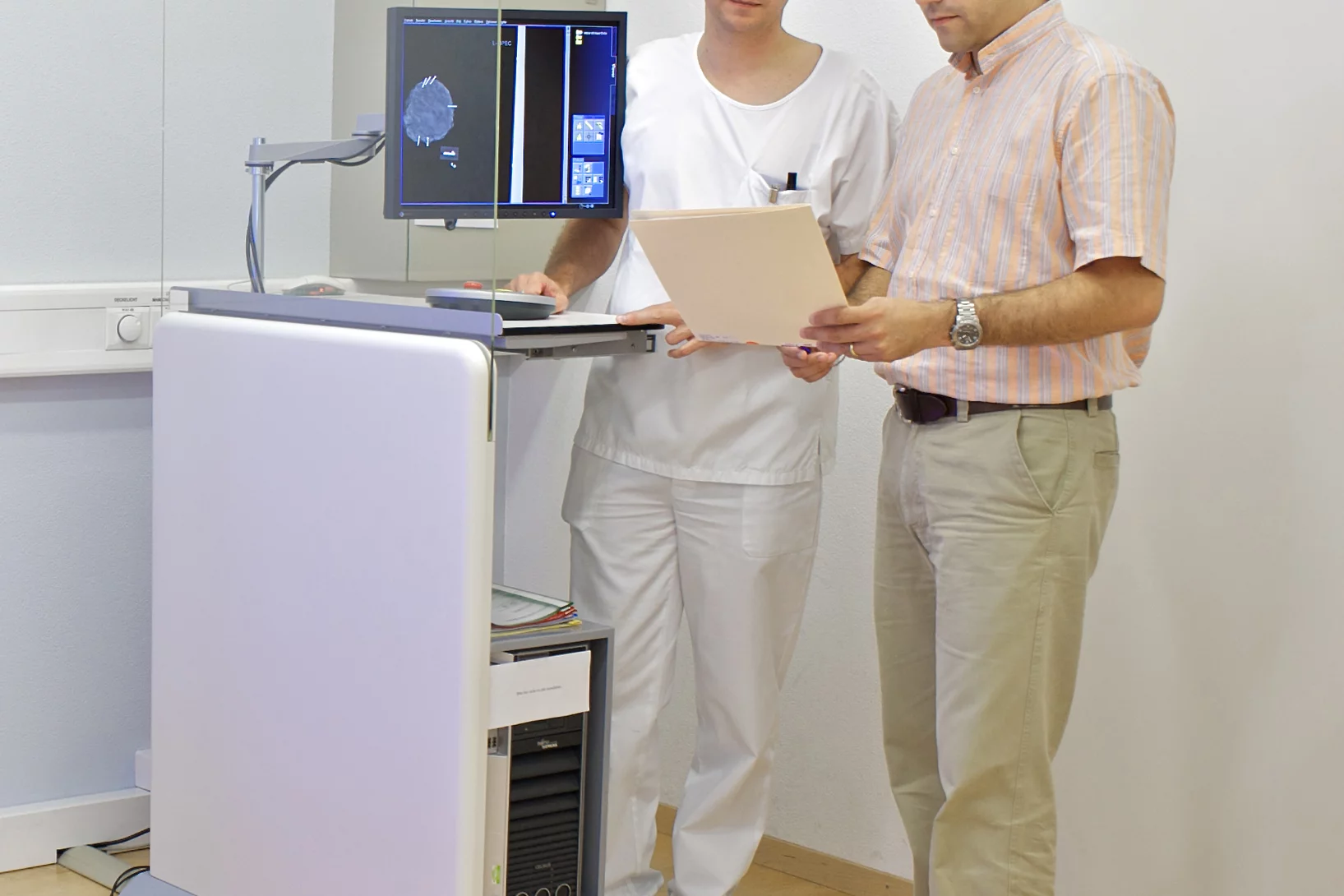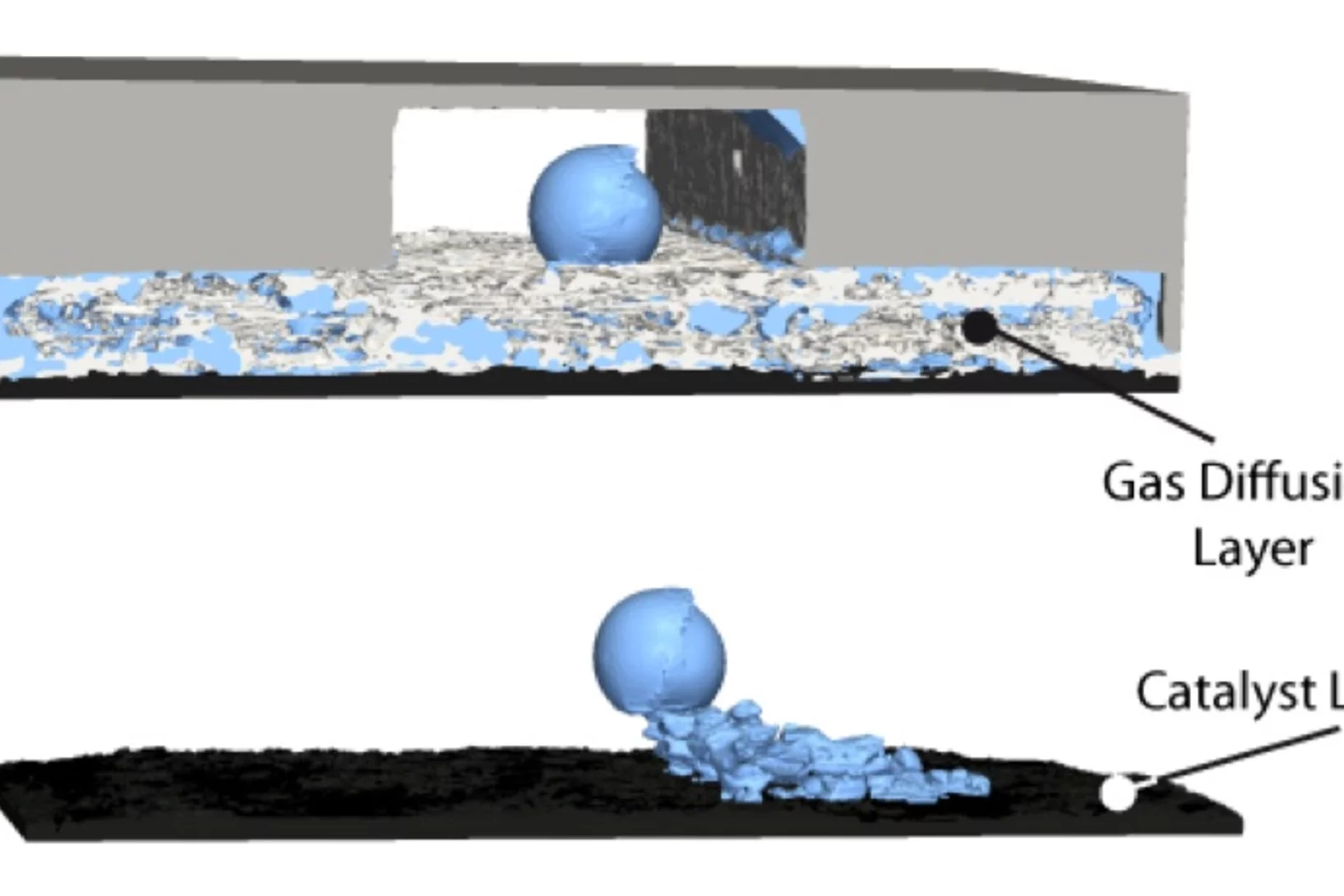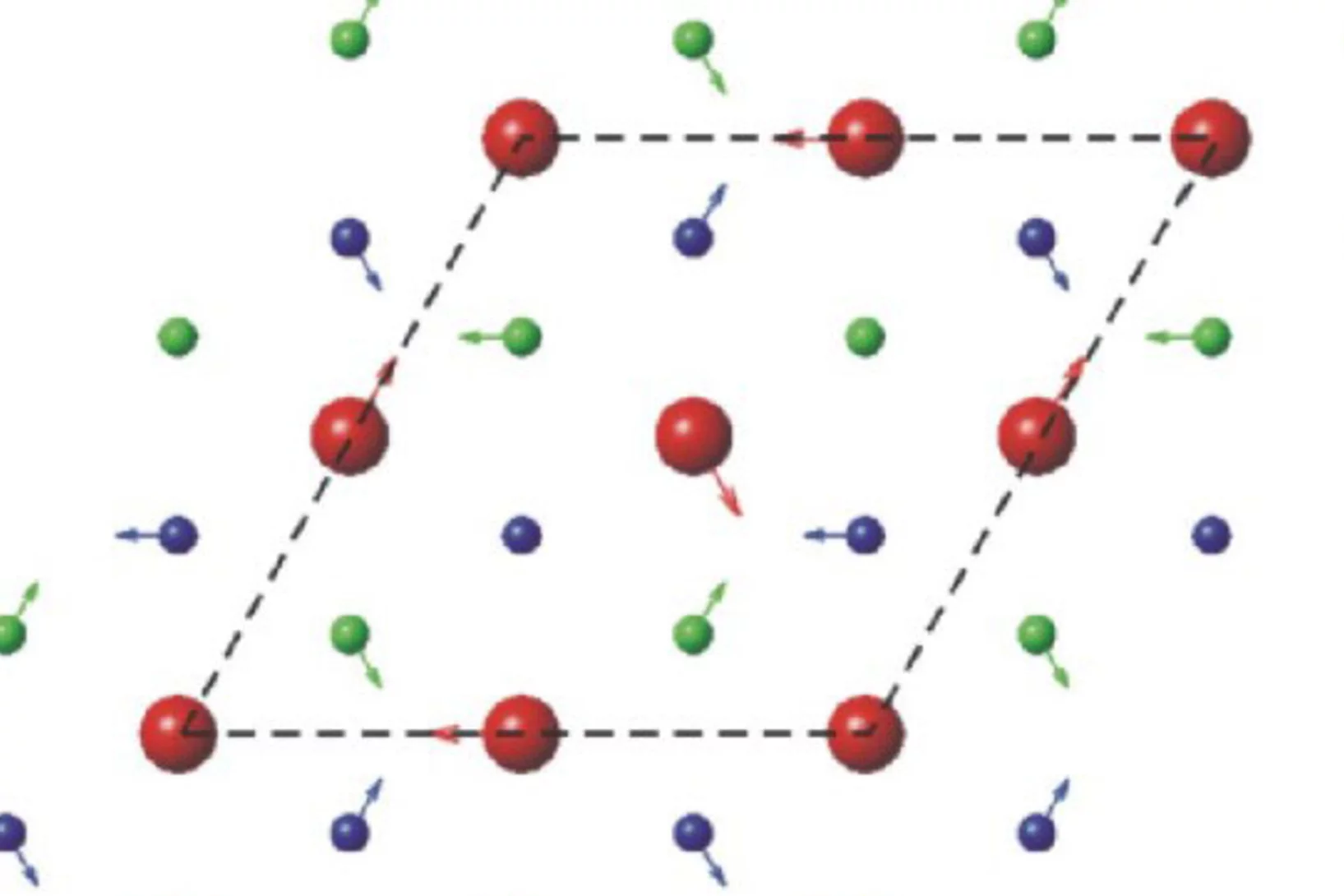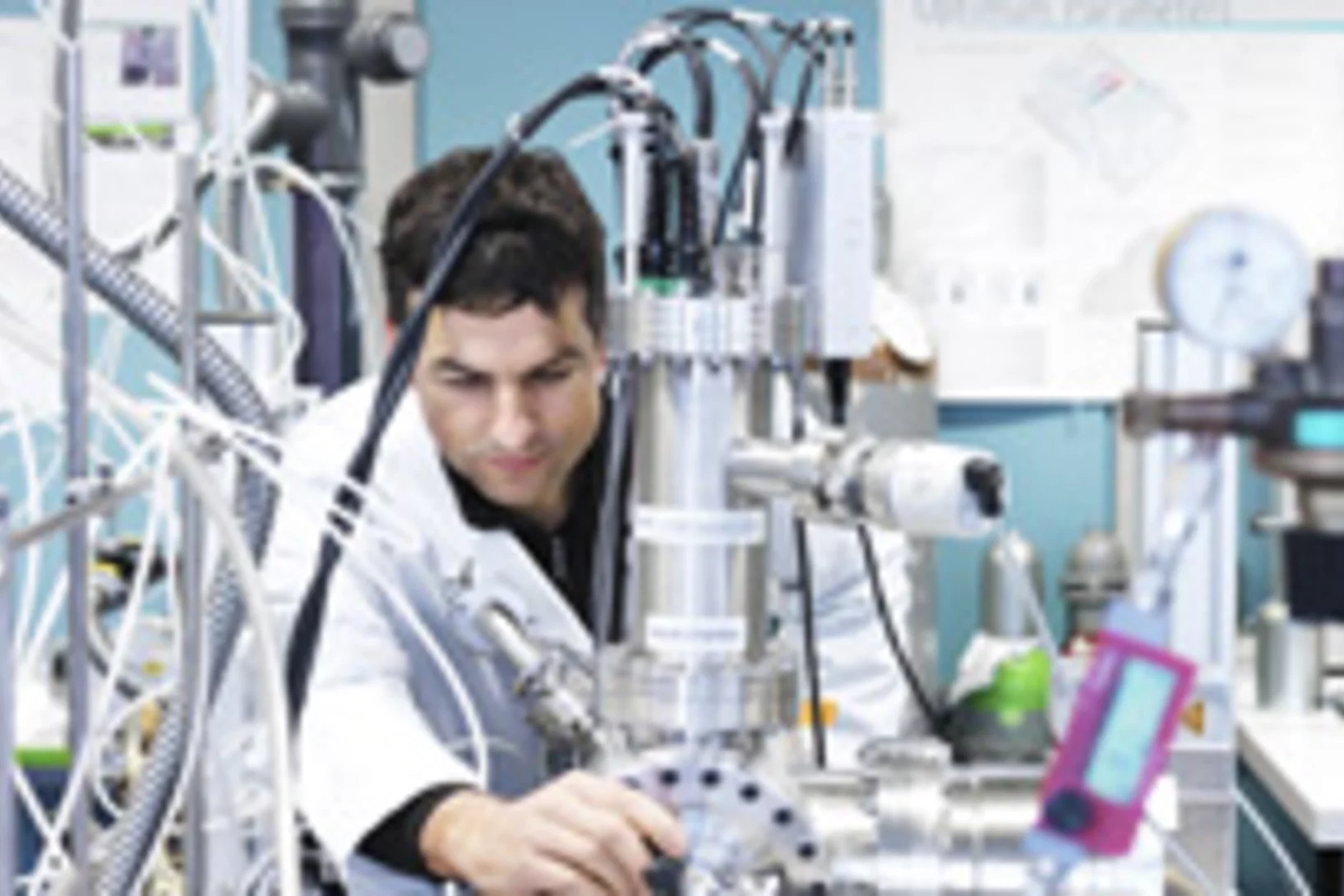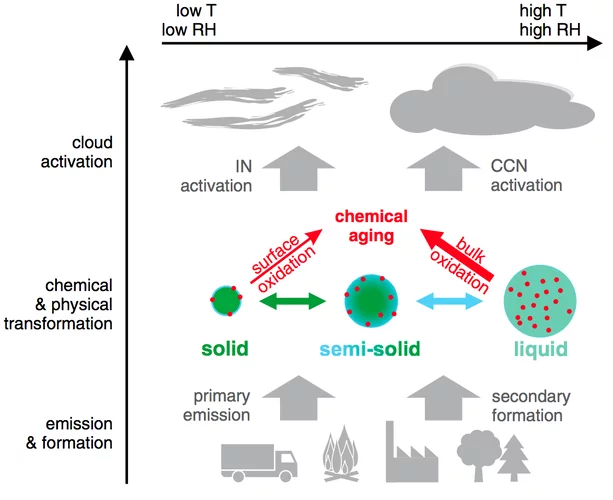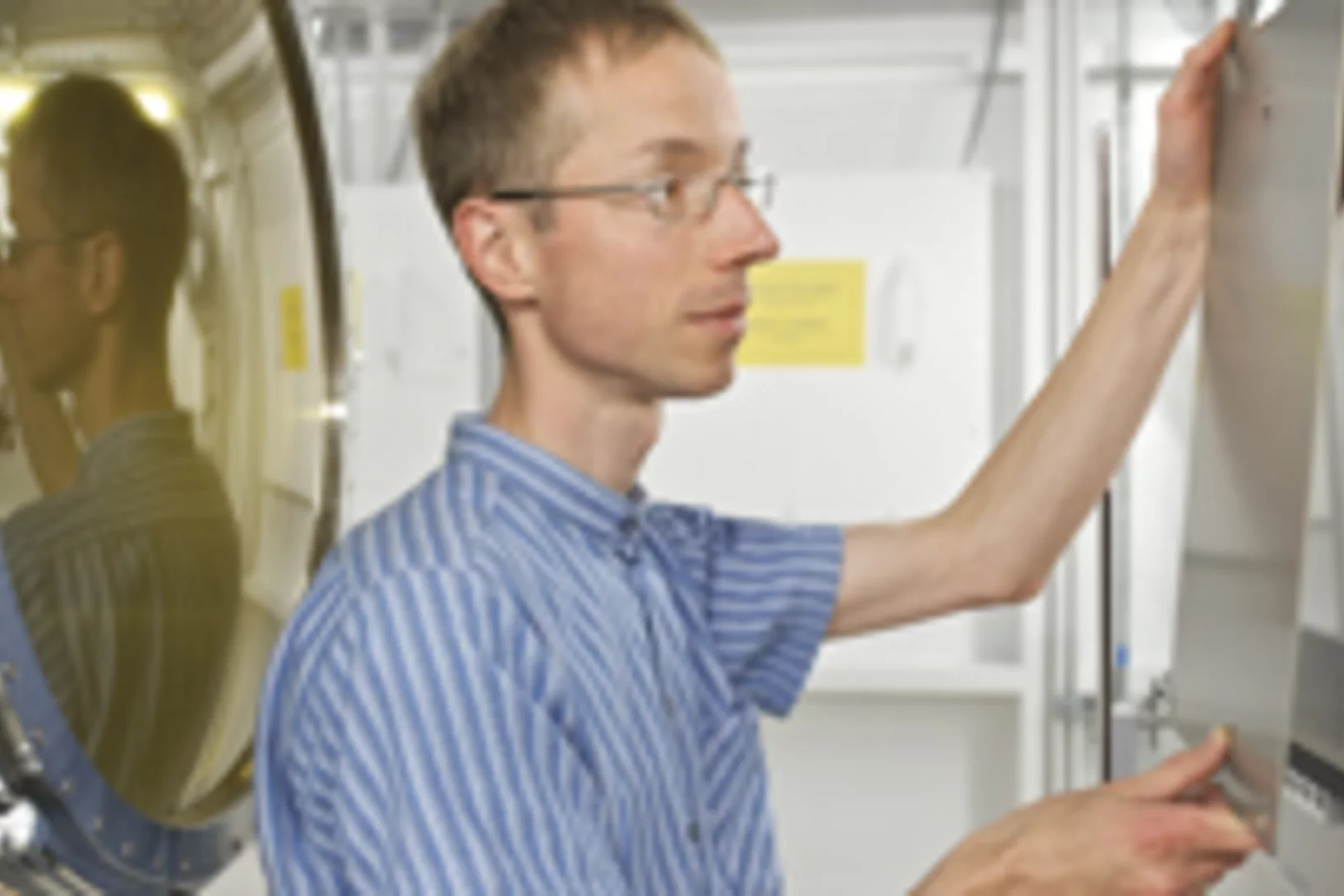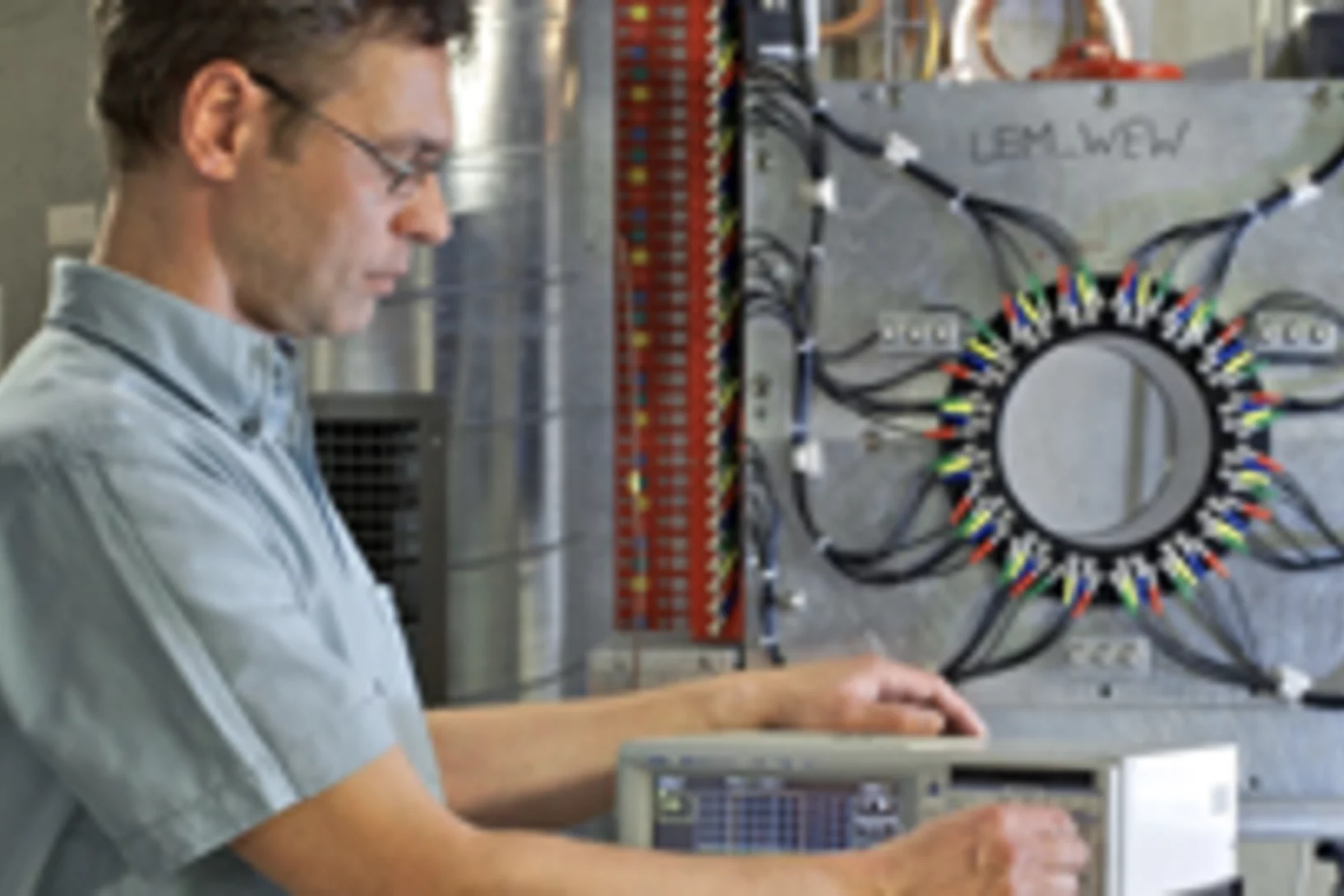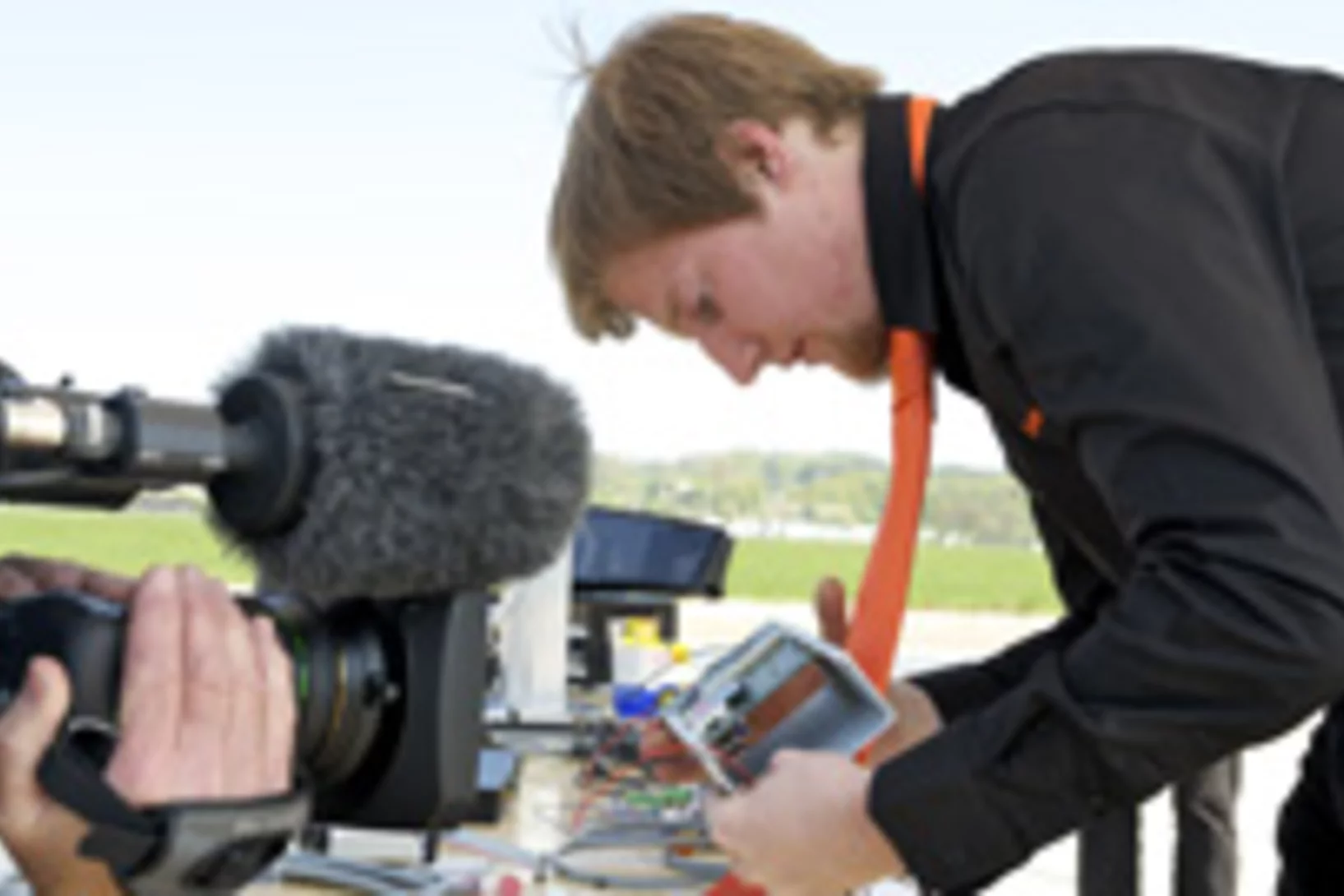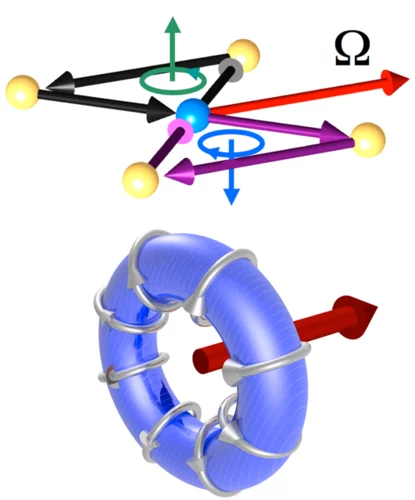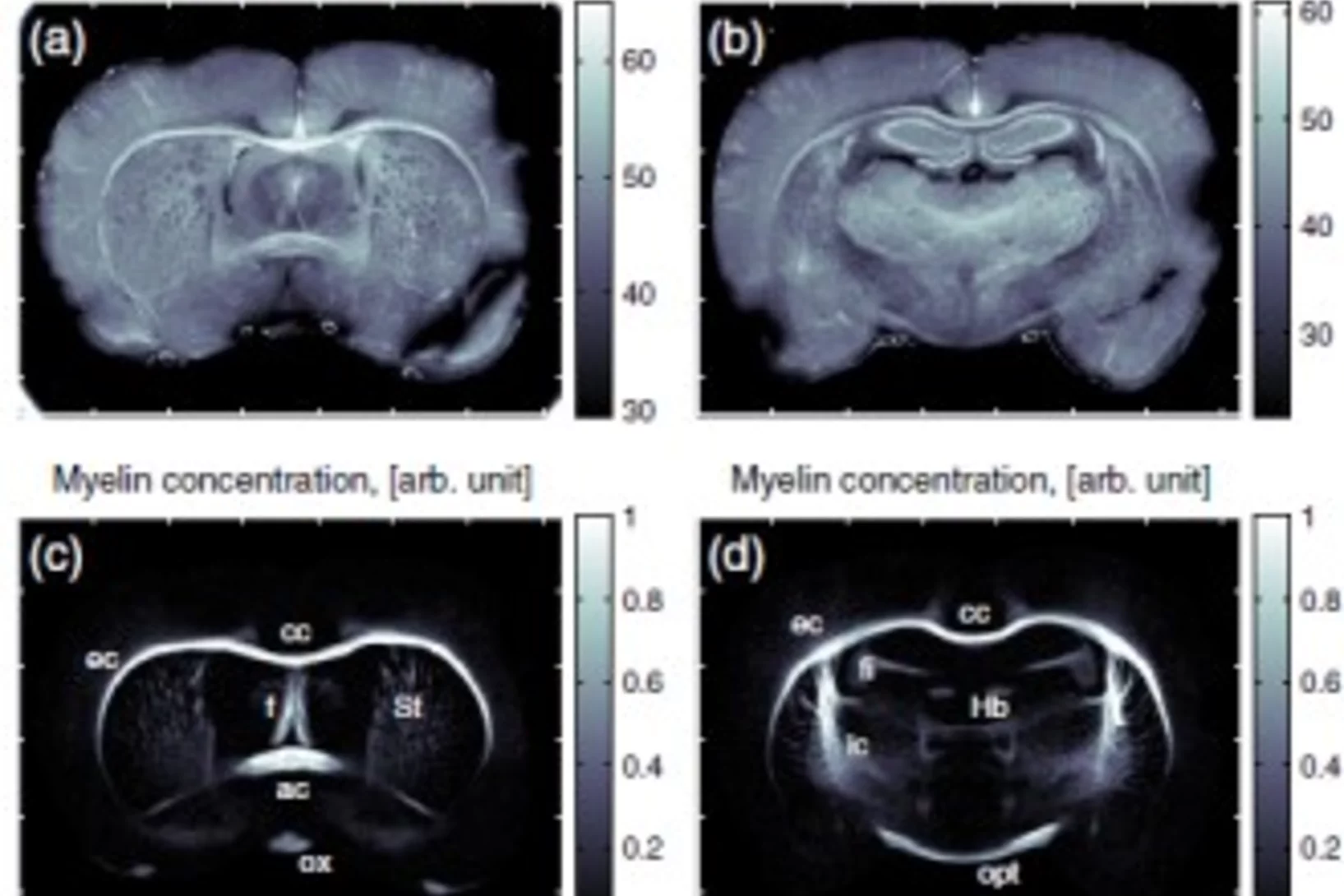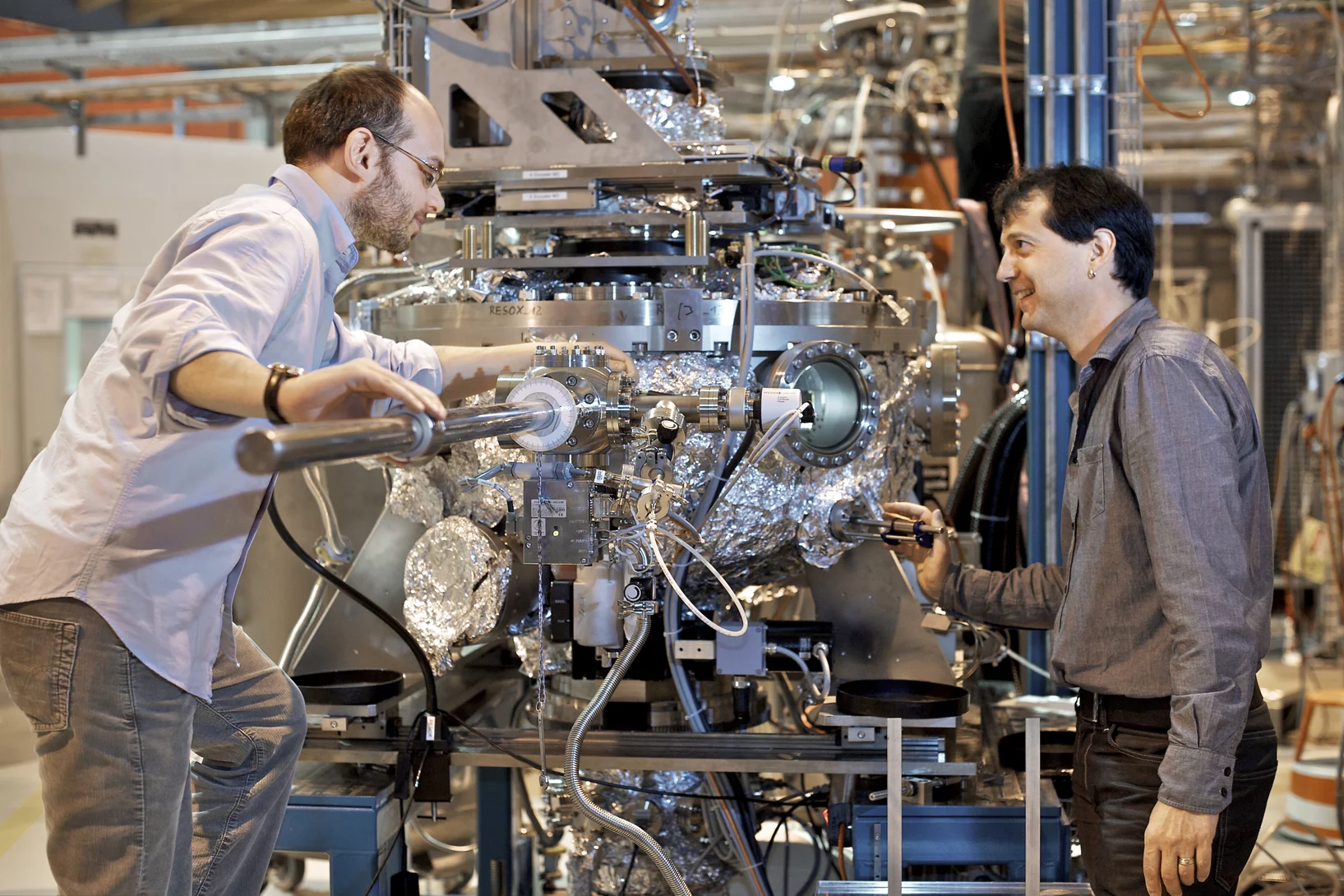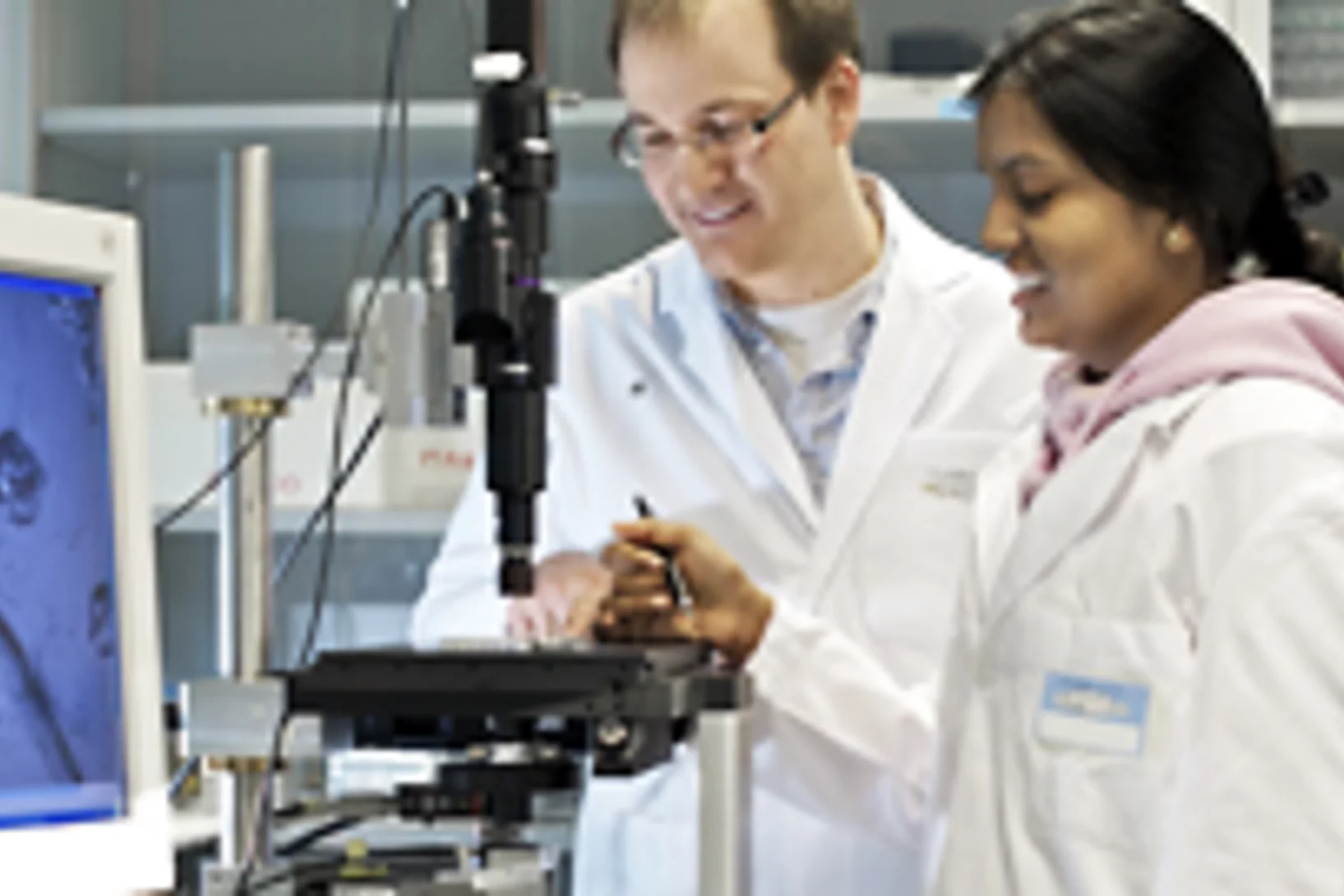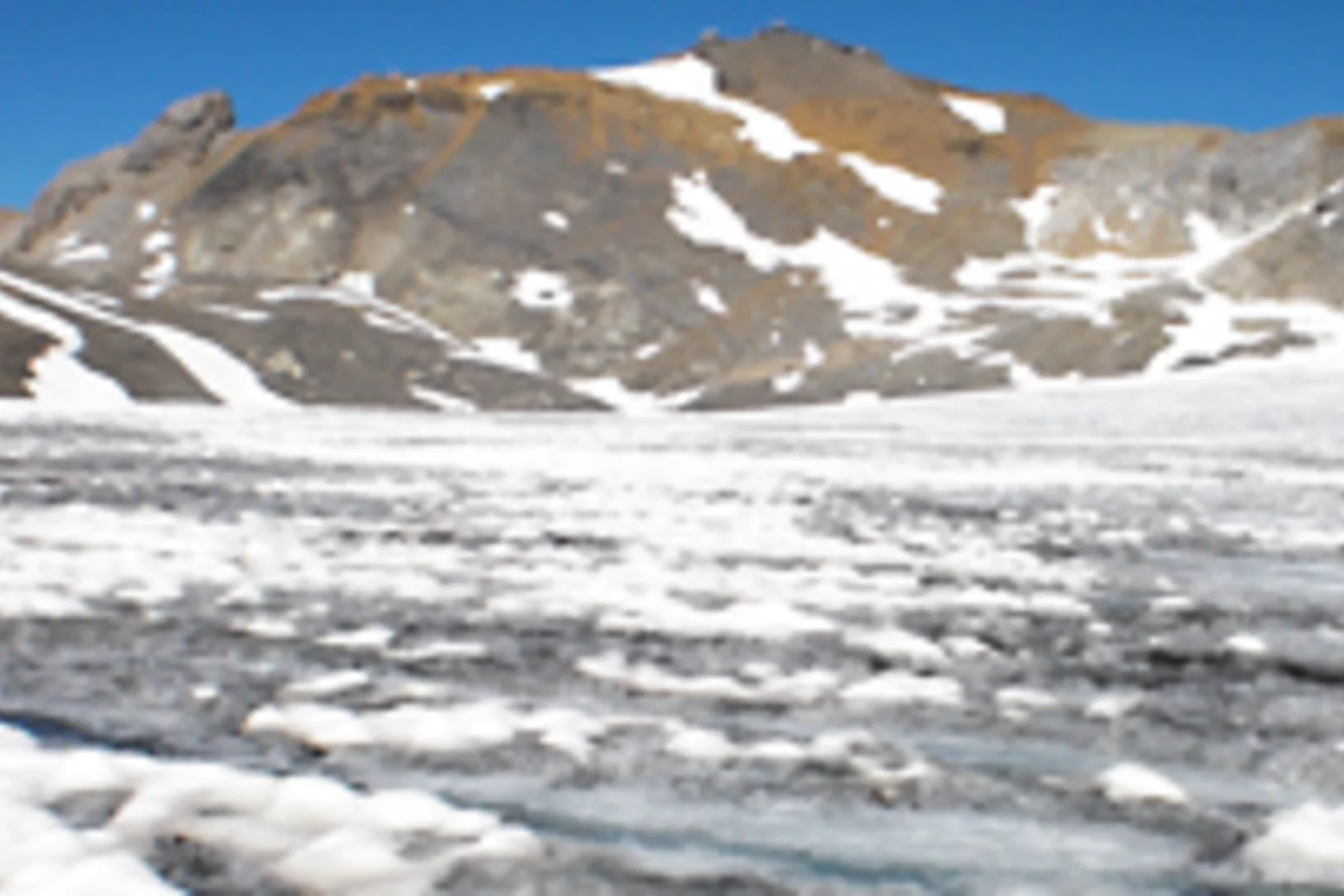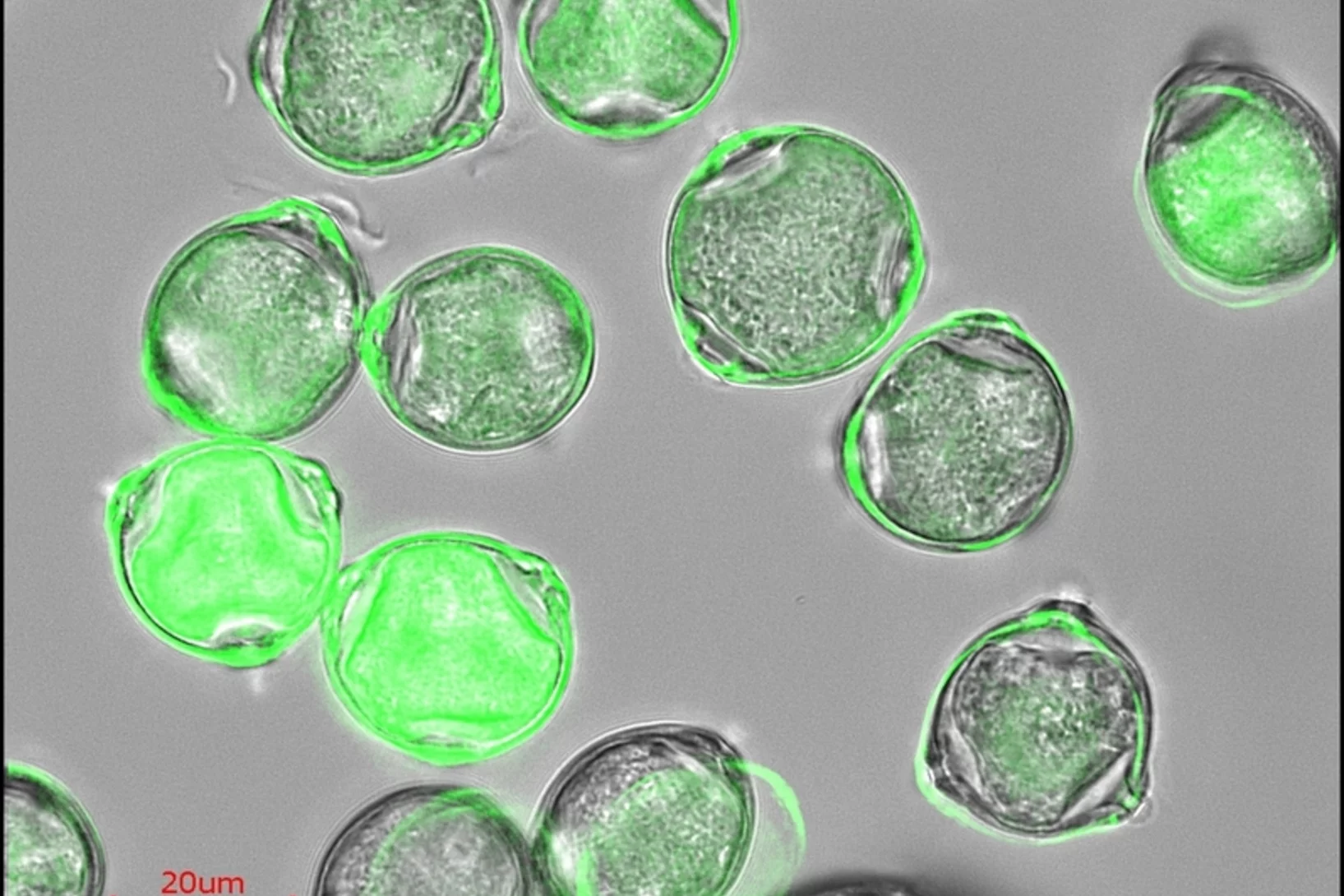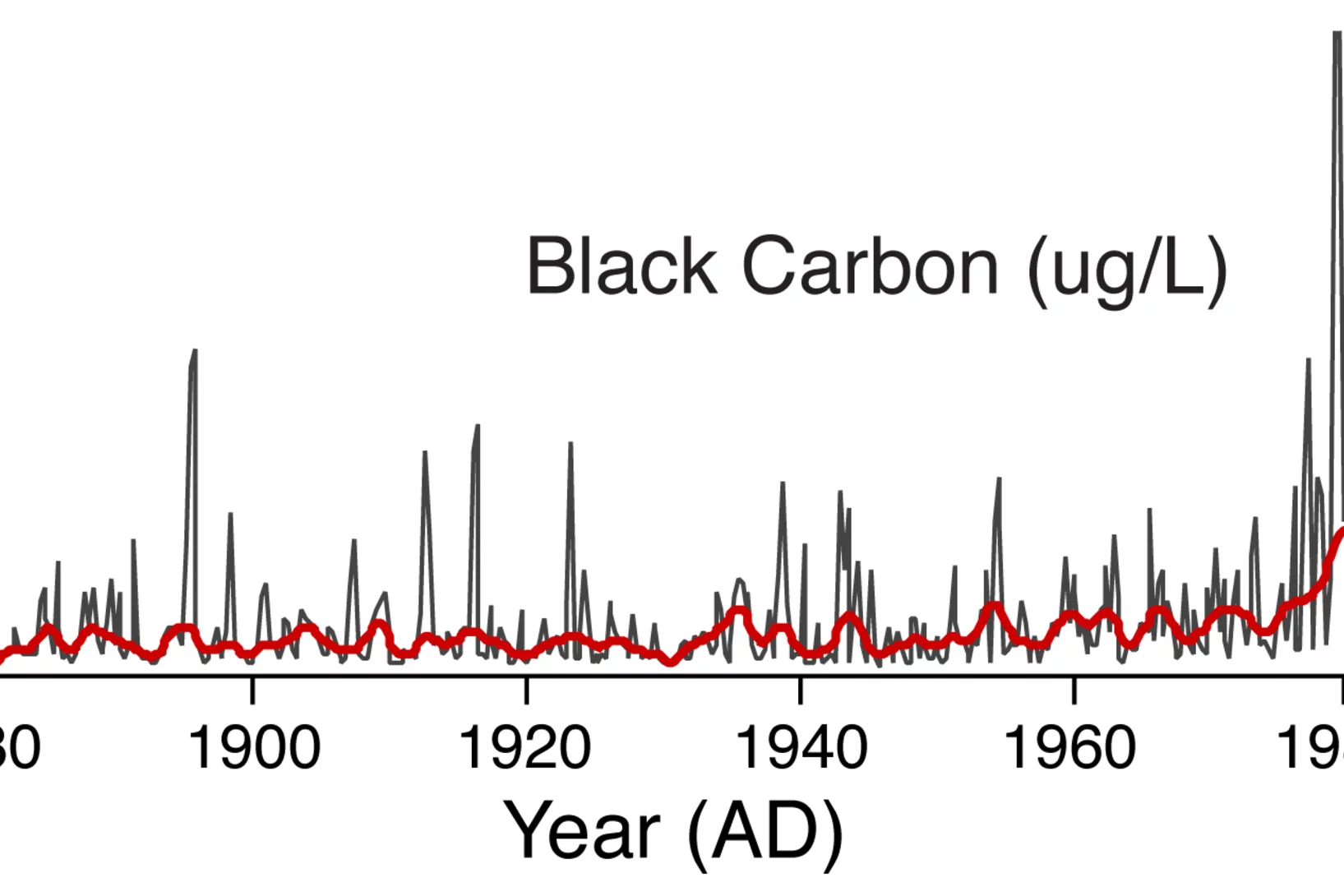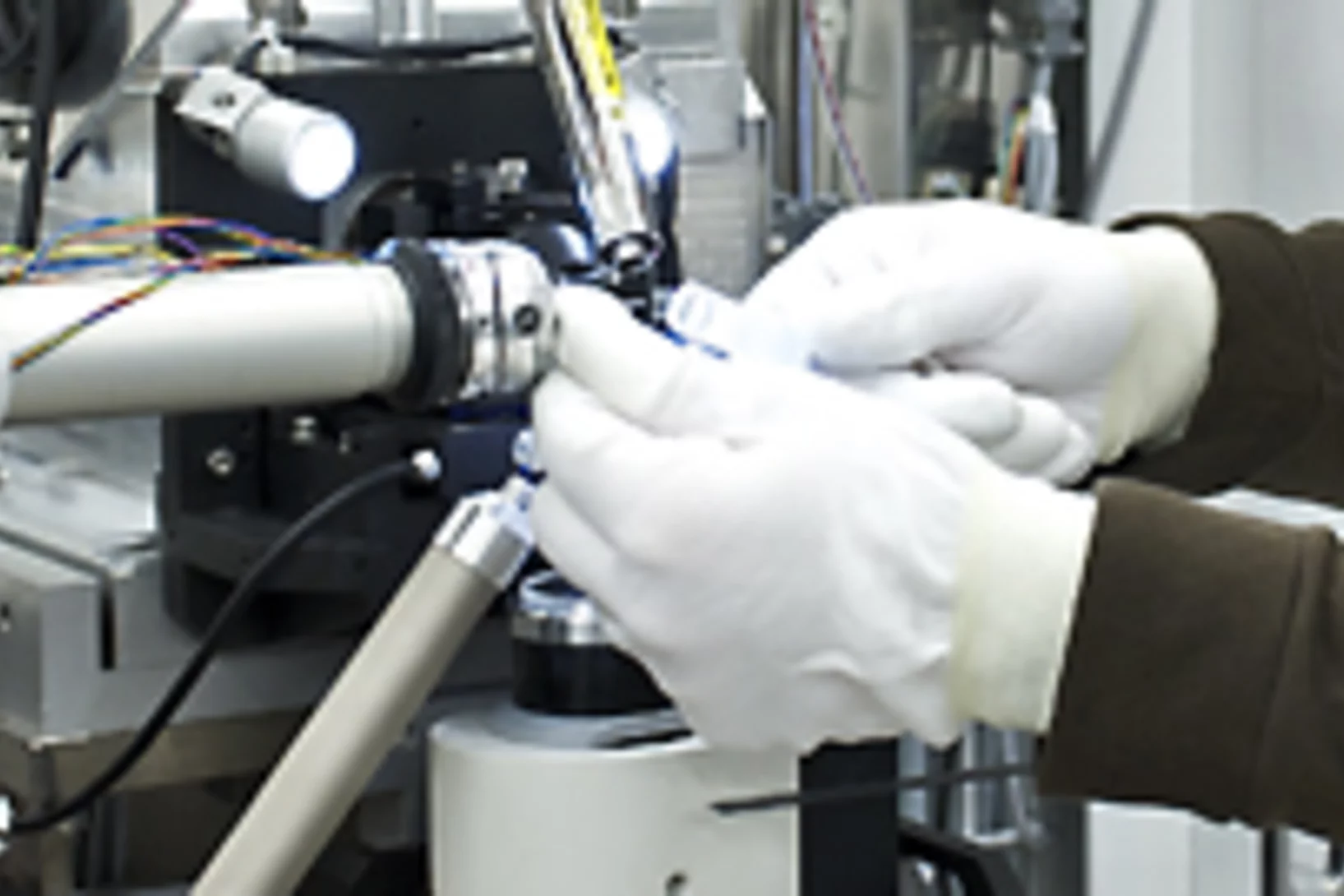At PSI, several projects are dedicated to important research questions concerning the Sars-CoV-2 coronavirus and the resulting diseases. We provide information on activities and projects, for example on investigations of lung tissue, on the production of proteins and antibodies or on ideas for new research on Covid-19.
Useful links
Influence of Methyl Halide Treatment on Gold Nanoparticles Supported on Activated Carbon
Gold particles supported on carbon when subjected to a flow of methyl iodide or bromide redisperse from large ensembles to single atoms and/or dimers of gold. Methyl halide oxidizes gold leading to gradual particle dissolution. The process could be carried out at temperatures as low as 50 °C. The excess of halide could be removed by a post-treatment of the material with 1%H2O/H2, which does not influence the metal dispersion. This remarkable transformation opens the possibility of re-activating gold catalysts that lost their performance due to metal particles sintering.
Schweiz beteiligt sich an Neutronenquelle der Zukunft
Mauro Dell’Ambrogio, Staatssekretär für Bildung und Forschung unterzeichnete heute die Absichtserklärung der Schweiz, sich an der neuen europäischen Neutronenquelle ESS (European Spallation Source) zu beteiligen. Darin bekennt sich die Schweiz zu dem Ziel, die ESS in Lund (Südschweden) zu bauen und verpflichtet sich, am Konzept mitzuarbeiten, in dem der endgültige Plan für die Anlage festgelegt wird. Kurz nach Fertigstellung des Konzepts im Frühjahr 2013 soll die Entscheidung für den Bau der ESS fallen. Die Schweizer Beiträge zur Entwicklung der Anlage werden durch das Paul Scherrer Institut, das langjährige Erfahrung in der Forschung mit Neutronen hat, sowie durch Schweizer Universitäten und die Schweizer Industrie erbracht.This news release is only available in German.
Plants create a water reserve in the soil
An international research team has now demonstrated in experiments at the Paul Scherrer Institute that the soil in the vicinity of roots contains more water that that further away. Apparently, plants create a small water reserve that helps to tide them over through short periods of drought. These results were obtained from experiments carried out with the benefit of neutron tomography.
Zehn Jahre Forschung in der fliegenden Untertasse
Mit einem Festakt hat das Paul Scherrer Institut (PSI) in Villigen (AG) heute an das zehnjährige Bestehen ihrer bedeutendsten Grossforschungsanlage erinnert. Seit der Inbetriebnahme im Sommer 2001 haben Tausende von Forschern aus Hochschule und Industrie an der Synchroton Lichtquelle Schweiz (SLS) qualitativ hochwertige Experimente durchgeführt. Ihre Forschung mündete in über 2000 wissenschaftlichen Publikationen und brachte darüber hinaus einen Nobelpreis sowie eine Vielzahl industrieller Anwendungen hervor.This news release is only available in German.
Direct Observation of Local Mn-Mn Distances in the Paramagnetic Compound CsMnxMg1-xBr3
We introduce a novel method for local structure determination with a spatial resolution of the order of 0.01 Å. It can be applied to materials containing clusters of exchange-coupled magnetic atoms. We use neutron spectroscopy to probe the energies of the cluster excitations which are determined by the interatomic coupling strength J.
Diamanten sind auch des Forschers bester Freund
Einem vom PSI geleiteten Forscherteam ist es gelungen, harte Röntgenlaserstrahlung 100'000-fach zu konzentrieren und so an einem Punkt Röntgenstrahlung zu erzeugen, die so intensiv war wie wohl nirgends zuvor. Als Linsen verwendeten die Forscher winzige Ringstrukturen aus Diamant à dem Material, das am besten dem Röntgenlaserlicht standhält. Diese Entwicklung schafft die Voraussetzung für einen Teil der Experimente am SwissFEL, dem geplanten Röntgenlaser des PSI.This news release is only available in German.
CCN formation mechanism in lower troposphere needs revision
Atmospheric aerosols exert an important influence on climate1 through their effects on stratiform cloud albedo and lifetime and the invigoration of convective storms. Model calculations suggest that almost half of the global cloud condensation nuclei in the atmospheric boundary layer may originate from the nucleation of aerosols from trace condensable vapours, although the sensitivity of the number of cloud condensation nuclei to changes of nucleation rate may be small. Despite extensive research, fundamental questions remain about the nucleation rate of sulphuric acid particles and the mechanisms responsible, including the roles of galactic cosmic rays and other chemical species such as ammonia. Here we present the first results from the CLOUD experiment at CERN.
Klimaforschung am Teilchenbeschleuniger: Beschreibung der Aerosolneubildung muss revidiert werden
Vom Menschen verursachte Aerosole wirken in der Atmosphäre kühlend: Klimaforscher nehmen an, dass sie einen Grossteil des anthropogenen Treibhauseffekts kompensieren. Allerdings müssen sich die Partikel zum Teil in der Atmosphäre erst neu bilden. Diesen bisher kaum untersuchten Prozess nimmt das CLOUD-Experiment am CERN, an dem auch Forscher des Paul Scherrer Instituts beteiligt sind, unter die Lupe. Dabei wurde erstmals ein Teilchenbeschleuniger für die Untersuchung von Vorgängen in der Atmosphäre eingesetzt. Die Ergebnisse zeigen: die Beschreibungen der Aerosolbildung in Klimamodellen muss revidiert werden.This news release is only available in German.
Standort des SwissFEL entschieden
Das Paul Scherrer Institut hat einen weiteren Meilenstein auf dem Weg zur Realisierung seiner neuen Grossforschungsanlage erreicht.Heute stimmte der Grosse Rat des Kantons Aargau der Anpassung des Richtplans zum Siedlungsgebiet in Würenlingen sowie der Anpassung des Nutzungsplans für das dortige Grundwasserschutzareal zu. Das Paul Scherrer Institut PSI freut sich über diesen wichtigen Entscheid auf dem Weg zur Realisierung seiner neuen Grossforschungsanlage SwissFEL (Schweizer Freie-Elektronen Röntgenlaser).This news release is only available in French and German.
Getting inside the mind (and up the nose) of our ancient ancestors
Reorganisation of the brain and sense organs could be the key to the evolutionary success of vertebrates, one of the great puzzles in evolutionary biology, according to a paper by an international team of researchers, published today in Nature. The study claims to have solved this scientific riddle by studying the brain of a 400 million year old fossilized jawless fish à an evolutionary intermediate between the living jawless and jawed vertebrates.
Investigation of a new method for the diagnosis of cancer in breast tissue
The Paul Scherrer Institute PSI has developed a new breast cancer diagnostic method, and is now carrying out first tests on non-preserved human tissue in conjunction with Kantonsspital Baden AG. This new method should be able to reveal structures that cannot be seen using conventional mammography. Scientists from the research department at Philips are currently investigating the use of this process as the basis for application in medical practice.
Investigation of a new method for the diagnosis of cancer in breast tissue
Collaboration between research, hospital and industry aimed at transferring innovative procedure into daily practice.
X-Ray Tomography of Water in Operating Fuel Cell
Polymer electrolyte fuel cells (PEFC) convert the chemical energy of hydrogen with a high efficiency (40-70 %) directly into electricity. The product of the overall reaction is water, produced at the cathode of the cell. The interaction of liquid water with the porous structures of the cell is one of the mechanisms in the PEFC that are commonly believed to be key for further optimization with regard to performance, durability and cost.
Non-thermal melting of a charge density wave
We use time-resolved optical reflectivity and x-ray diffraction with femtosecond resolution to study the dynamics of the structural order parameter of the charge density wave phase in TiSe2. We find that the energy density required to melt the charge density wave nonthermally is substantially lower than that required for thermal suppression and is comparable to the charge density wave condensation energy.
Auch Feinstaub altert
Ob fest, gelartig oder flüssig ist entscheidendFeinstaubpartikel tragen wesentlich zur Luftverschmutzung bei. Durch Reaktionen mit anderen Luftschadstoffen verändern sich diese Partikel mit der Zeit, sie altern. Der Alterungsprozess hängt wesentlich von der Luftfeuchte ab, und damit auch die Auswirkungen von Feinstaubpartikeln auf unsere Gesundheit und unser Klima. Dies zeigen gemeinsame Versuche von Wissenschaftlern des Paul Scherrer Instituts PSI und des Max-Planck-Instituts für Chemie sowie der Universität Bielefeld in Deutschland.This news release is only available in German.
PSI sets world record with 1.4 MW proton beam
The highest average power proton beam in the world was produced on 20th of June in the 590 MeV cyclotron at Paul Scherrer Institut. Extremely low beam losses achieved in this 35 years old veteran cyclotron allowed PSI team of accelerator scientists and engineers to put 1.4 MW beam of protons onto the muon and neutron spallation targets. This beam is used to produce the brightest beam of muons in the world, as well as supply neutrons for the spallation source SINQ.
Gas uptake and chemical aging of semisolid organic aerosol particles
Organic substances can adopt an amorphous solid or semisolid state, influencing the rate of heterogeneous reactions and multiphase processes in atmospheric aerosols. Here we demonstrate how molecular diffusion in the condensed phase affects the gas uptake and chemical transformation of semisolid organic particles. Flow tube experiments show that the ozone uptake and oxidative aging of amorphous protein is kinetically limited by bulk diffusion.
X-ray methods help to understand brain disorders better
An international team of researchers has developed a new method for making detailed X-ray images of brain tissue, which has been used to make the myelin sheaths of nerve fibres visible. Damage to these protective sheaths can lead to various disorders, such as multiple sclerosis. The facility for creating these images of the protective sheaths of nerve cells is being operated at the Swiss Light Source (SLS), at the Paul Scherrer Institute.
Der Unterschied zwischen dünn und sehr dünn
Materialforschung in neuer DimensionViele Materialien haben eine spezielle kristalline Struktur à ihre Atome sind übereinander in Schichten angeordnet. Ein deutsch-schweizerisches Forscherteam hat zum ersten Mal präzise beobachtet, wie die physikalischen Eigenschaften einer Substanz von der Zahl dieser Schichten abhängen. Dass sich die physikalischen Charakteristika nun auch auf diese Weise kontrollieren lassen, eröffnet neue Möglichkeiten, Stoffe zu identifizieren, aus denen die Computerchips der Zukunft gemacht sein könnten.This news release is only available in French and German.
Physiklaboranten bremsen Raser aus
Fachhochschule und PSI freuen sich über die gemeinsame ArbeitDie Physiklaborantenlernenden Severin Jörg und Mathias Graf vom Paul Scherrer Institut PSI und ihr Berufskollege Thomas Rastija von der NTB Interstaatliche Hochschule für Technik in Buchs (SG) haben eine kleine Box entwickelt, die Geschwindigkeitsexzesse mit dem Auto verhindert. Das mittlerweile patentierte und von Schweizer Jugend forscht mit hervorragend ausgezeichnete Projekt heisst Setomat und ist das Resultat der Berufsmaturitätsarbeit des aufgeweckten Trios.This news release is only available in German.
Observation of Orbital Currents in CuO
Although high-temperature (Tc) superconductivity was discovered in the cuprates 25 years ago, there is still no consensus on its microscopic origin.
X-ray methods help to understand brain disorders better
An international team of researchers from Denmark, Germany, Switzerland and France has developed a new method for making detailed X-ray images of brain tissue, which has been used to make the myelin sheaths of nerve fibres visible. Damage to these protective sheaths can lead to various disorders, such as multiple sclerosis. The facility for creating these images of the protective sheaths of nerve cells is being operated at the Swiss Light Source (SLS), at the Paul Scherrer Institute.
The electron torus can help us to understand high-temperature superconductors
Paul Scherrer Institute researchers prove, for the first time, the existence of toroidal currents in solids
Golden Idea Award der IDEE-SUISSE an Aldo Steinfeld
Für seine Arbeiten zur Erzeugung von Syngas aus Kohlendioxid und Wasser mithilfe konzentrierter Sonnenenergie erhält Aldo Steinfeld, Leiter des Labors für Solartechnik am Paul Scherrer Institut und Professor für Erneuerbare Energieträger an der ETH Zürich, den Golden Idea Award der IDEE-SUISSE, der Schweizerischen Gesellschaft für Ideen- und Innovationsmanagement. Syngas ist eine Vorstufe verschiedener flüssiger Treibstoffe.This news release is only available in German.
The basic structures of sight deciphered
At the beginning of the process of sight, light interacts with a protein molecule called Rhodopsin. This molecule contains the actual light sensor that is stimulated by the incoming light and changes its form, in order to trigger the rest of the process. Researchers have now managed to determine the exact structure of the Rhodopsin molecule in its short-lived, excited state. From this, they have obtained a precise picture of the first step of the process of sight.
PSI-Feriencamp 2011
Suchen Sie für Ihr Kind ein spannendes Angebot während den Sommerferien? Möchten Sie in ihm die Neugier und Begeisterung für naturwissenschaftlich-technische Themen wecken? Die Berufsbildung und das Komitee für Chancengleichheit führt dieses Jahr zum achten Mal das PSI-Feriencamp durch!
Russ lässt Himalaya-Gletscher schneller schmelzen
Forschende des Paul Scherrer Instituts haben zusammen mit Kollegen aus China und den USA gezeigt, dass die Klimaerwärmung nicht alleine für die Gletscherschmelze im Himalaya verantwortlich ist. Auch Russ, der auf dem Gletscher abgelagert wird, trägt dazu bei. Der Russ entsteht, wenn Öl oder Holz verbrannt werden; Wind transportiert ihn dann in den Himalaya.This news release is only available in German.
The role of long-lived reactive oxygen intermediates in the reaction of ozone with aerosol particles
The heterogeneous reactions of ozone with aerosol particles are of central importance to air quality. They are studied extensively, but the molecular mechanisms and kinetics remain unresolved. Based on new experimental data and calculations, we show that long-lived reactive oxygen intermediates (ROIs) are formed. The chemical lifetime of these intermediates exceeds 100 seconds, which is much longer than the surface residence time of molecular ozone (~ ns).
Recent increase in black carbon concentrations from a Mt. Everest ice core spanning 1860–2000 AD
A Mt. Everest ice core spanning 1860à2000 AD and analyzed at high resolution for black carbon (BC) using a Single Particle Soot Photometer demonstrates strong seasonality, with peak concentrations during the winter‐spring, and low concentrations during the summer monsoon season. BC concentrations from 1975à2000 relative to 1860à1975 have increased approximately threefold, indicating that BC from anthropogenic sources is being transported to high elevation regions of the Himalaya.
Dem Rätsel der Centriolen-Bildung auf der Spur
In menschlichen Zellen finden sich stammesgeschichtlich sehr alte Funktionseinheiten, die als Centriolen bezeichnet werden. Ein Forscherteam vom PSI und der ETH Lausanne hat nun erstmals ein Modell für die Bildung der Centriolen vorgestellt. Das erstaunende Ergebnis ist, dass die Neuner-Symmetrie des Centriols durch die Fähigkeit eines einzelnen Proteins sich selbst zu organisieren zustande kommt.This news release is only available in French and German.

